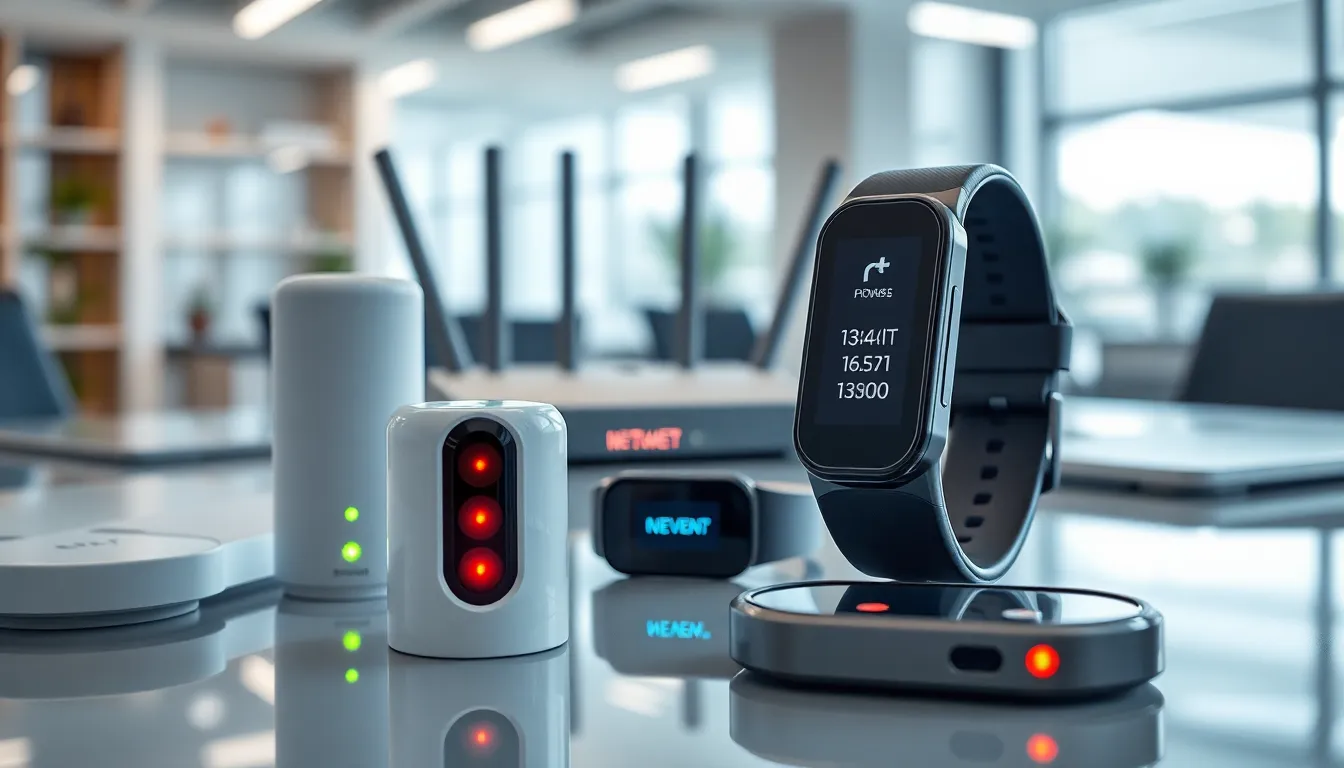The Internet of Things (IoT) isn’t just a buzzword; it’s the digital equivalent of a toddler with a new toy—exciting, unpredictable, and growing faster than anyone can keep up with. As more devices connect to the internet, from smart fridges to wearable tech, the IoT market is experiencing explosive growth that’s hard to ignore.
Table of Contents
ToggleOverview Of IoT Market Growth
The Internet of Things (IoT) market has experienced exponential growth in recent years. According to a report by Fortune Business Insights, the IoT market size reached $478.36 billion in 2021 and is projected to grow at a compound annual growth rate (CAGR) of 26.4%, potentially exceeding $1.5 trillion by 2028.
Increased connectivity drives this growth. Devices such as smart fridges, wearable health monitors, and smart home systems contribute to the expanding ecosystem of connected devices. Businesses and consumers increasingly adopt IoT solutions, seeking improved efficiency and enhanced customer experiences.
Industry sectors also play a significant role in IoT expansion. Healthcare benefits from remote patient monitoring and telemedicine, while manufacturing capitalizes on smart factory technologies and automation. Cities evolve with smart infrastructure that optimizes traffic flow and energy consumption.
Governments support IoT initiatives with funding and regulatory frameworks. For instance, investments in 5G networks foster faster data transmission and broader device connectivity. The global emphasis on sustainability propels IoT solutions that improve resource management and reduce environmental impact.
Security remains a pressing concern. The rise of connected devices has led to increased vulnerabilities. Effective security measures are critical for maintaining user trust and ensuring smooth adoption. This focus on cybersecurity shapes strategies for IoT product development and deployment.
Market players are continuously innovating. Companies invest in research and development to create advanced AI and machine learning capabilities that enhance IoT applications. Partnership and collaboration within the ecosystem drive further advancements, illustrating a dynamic landscape poised for significant transformation.
Key Drivers Of Growth

Several factors contribute to the impressive growth of the IoT market. Notably, advancements in technology and increased connectivity play significant roles.
Technological Advancements
Emerging technologies significantly enhance IoT capabilities. Devices like smart sensors and edge computing solutions streamline data processing and analysis. Artificial intelligence supports IoT systems by enabling predictive analytics, leading to better decision-making. Companies adopt cloud computing to ensure scalable data storage and management. Innovations in energy-efficient devices contribute to longer battery life, making IoT devices more reliable. Overall, technology evolves rapidly, continually paving the way for new applications.
Increased Connectivity
The expansion of high-speed internet plays a crucial role in IoT growth. Improved 5G infrastructure facilitates faster data transfer and lower latency, enabling real-time applications. Rural areas experience increased coverage, broadening the user base for smart devices. Connectivity through satellite networks also supports IoT in remote locations. Consumer products, ranging from smart appliances to wearables, thrive as more devices connect seamlessly. Greater connectivity fosters user engagement and drives market demand, fueling ongoing growth.
Challenges Facing The IoT Market
The IoT market faces multiple challenges that could impact its growth trajectory. Two significant concerns include security issues and regulatory complexities.
Security Concerns
Security remains a top priority in the IoT landscape. Increasing numbers of interconnected devices heighten vulnerability to cyberattacks. In 2021 alone, the IoT sector experienced a surge in data breaches, underscoring the importance of robust security protocols. Organizations must implement strong encryption methods and regular software updates to protect sensitive information. Users expect their data to remain private, which creates pressure on companies to prioritize security measures. As the market evolves, investing in security technologies becomes essential to maintain user trust and ensure sustainable growth.
Regulatory Issues
Regulatory challenges pose obstacles for IoT market growth. Stringent regulations can vary significantly across different regions, complicating compliance for businesses. Manufacturers find navigating these regulations especially challenging when introducing new products. Asset tracking and data privacy laws require continuous monitoring to align with evolving legal frameworks. Uncertainties in regulations may also slow down innovation within the industry. Companies must work closely with regulators to establish clear guidelines that foster an environment conducive to growth while ensuring user protection.
Future Trends In IoT Market Growth
Innovations in the Internet of Things (IoT) continually shape the market landscape, offering exciting possibilities and challenges.
Emerging Applications
Diverse sectors explore new applications, pushing the boundaries of IoT technology. Home automation systems enhance comfort and energy efficiency, while smart health devices monitor vital statistics in real time. In agriculture, IoT sensors track soil moisture and crop health, optimizing yield. Transportation systems adopt IoT for traffic management and fleet tracking, improving logistics efficiency. Retailers also leverage IoT for inventory management and personalized customer experiences, creating a smarter shopping environment. As these applications evolve, they drive demand and foster broader adoption across various industries.
Market Projections
Experts project the IoT market will exceed $1.5 trillion by 2028, highlighting the rapid growth trajectory. Significant investments in 5G infrastructure support this expansion, with increased connectivity and data transfer speeds. Organizations recognize the value of IoT solutions, with a projected compound annual growth rate of over 25% from 2021 to 2028. Industries such as healthcare and manufacturing are expected to lead in market share as they adopt IoT technologies for improved efficiency and innovation. Governments continue to encourage IoT development, providing funding and regulatory support to ensure sustainable growth.
Conclusion
The IoT market stands on the brink of transformative growth fueled by technological advancements and increased connectivity. As industries harness the power of IoT solutions, the potential for enhanced efficiency and improved customer experiences becomes clearer. However, challenges like security vulnerabilities and regulatory complexities must be addressed to maintain user trust and foster sustainable development.
With ongoing innovations and collaboration among stakeholders, the future of IoT appears bright. As this dynamic landscape evolves, businesses and consumers alike can expect to see significant advancements that redefine everyday interactions and operational efficiencies across various sectors. The journey of IoT is just beginning, and its implications are poised to reshape the world in profound ways.





